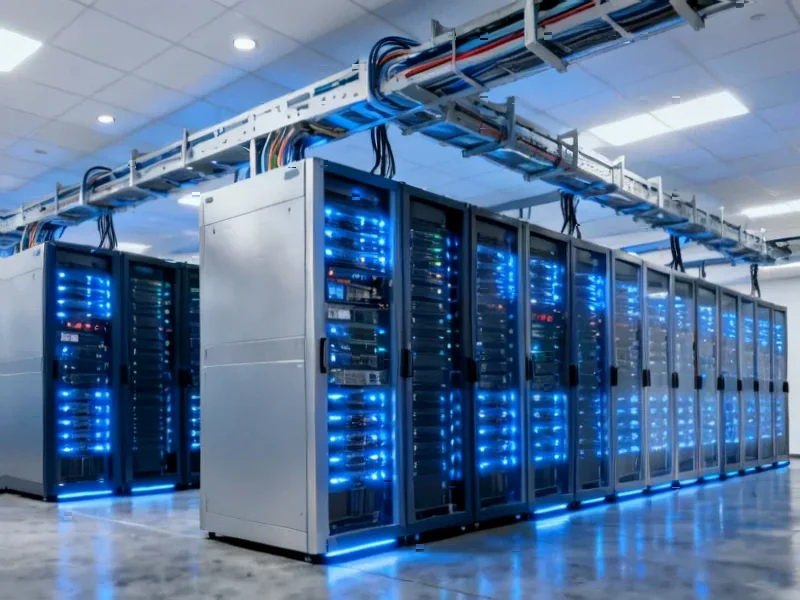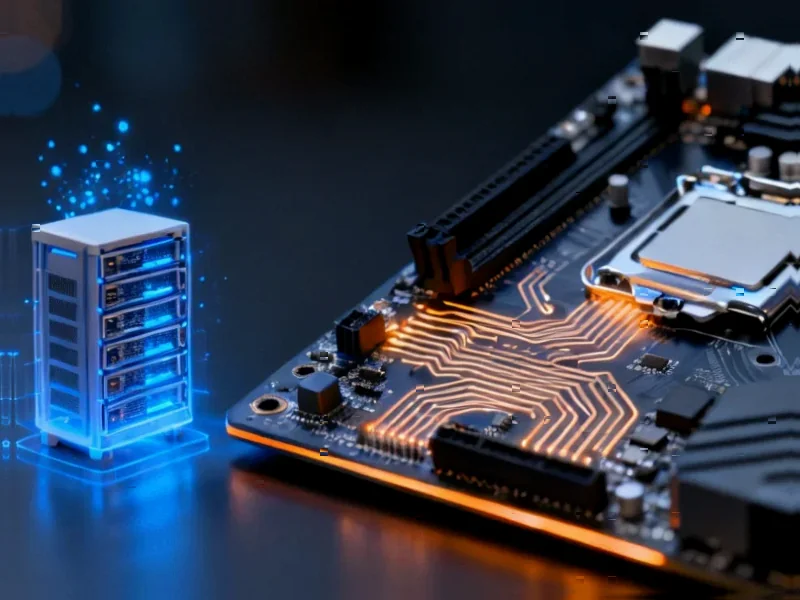According to TechCrunch, Microsoft has signed a $9.7 billion, five-year contract with Australia’s IREN to secure additional AI cloud capacity. The deal will provide Microsoft access to compute infrastructure built with Nvidia’s GB300 GPUs, which will be deployed in phases through 2026 at IREN’s facility in Childress, Texas, planned to support 750 megawatts of capacity. IREN is separately purchasing GPUs and equipment from Dell for approximately $5.8 billion, and the company’s CEO Daniel Roberts expects the Microsoft deal to take up only 10% of their total capacity while generating about $1.94 billion in annualized revenue. This agreement follows Microsoft’s recent deal with Nscale for approximately 200,000 Nvidia GB300 GPUs across data centers in Europe and the U.S. This massive infrastructure investment highlights the intensifying competition for AI compute resources.
The Cloud Capacity Crunch Intensifies
Microsoft’s aggressive move reveals a fundamental shift in cloud infrastructure strategy. Rather than building everything in-house, cloud providers are now securing capacity through third-party specialists who can deploy infrastructure faster and more efficiently. This represents a departure from the traditional cloud model where hyperscalers controlled their entire stack. The sheer scale of this deal – nearly $10 billion for what IREN describes as just 10% of their capacity – suggests that specialized infrastructure providers have become critical partners in the AI arms race. This trend is creating a new layer in the cloud ecosystem where infrastructure specialists operate as wholesale suppliers to the major cloud platforms.
From Bitcoin Mining to AI Infrastructure
The IREN story exemplifies a broader industry transformation where former cryptocurrency mining operations are pivoting to AI infrastructure. Companies that accumulated massive GPU fleets during the crypto boom are finding more stable, higher-margin opportunities in AI compute. This transition makes economic sense – AI workloads provide predictable, recurring revenue compared to the volatility of cryptocurrency mining. The shift from bitcoin mining to AI infrastructure represents a natural evolution for these companies, leveraging their expertise in managing large-scale, power-intensive computing operations. We’re likely to see more crypto-mining operations follow this path as the AI compute demand continues to outstrip supply.
Nvidia’s Unshakeable Position
This deal further solidifies Nvidia’s dominance in the AI hardware ecosystem. The fact that both Microsoft and IREN are building infrastructure around Nvidia’s GB300 GPUs demonstrates that alternative AI chips from AMD, Intel, or cloud providers’ own silicon haven’t yet reached the performance thresholds needed for cutting-edge AI workloads. The GB300 platform, particularly the NVL72 systems Microsoft recently deployed for Azure, appears to be becoming the industry standard for large-scale AI inference and training. This creates a challenging environment for competitors trying to gain traction in the AI accelerator market, as enterprise customers increasingly demand Nvidia compatibility for their most demanding AI applications.
Strategic Implications for Cloud Competition
The competitive dynamics in cloud computing are fundamentally changing. Microsoft’s willingness to commit nearly $10 billion to a single infrastructure partner indicates that traditional cloud market share battles are being replaced by capacity acquisition races. AWS and Google Cloud face similar pressures to secure sufficient AI compute, potentially creating opportunities for infrastructure specialists who can deliver at scale. This could lead to a bifurcated market where general-purpose cloud services coexist with specialized AI infrastructure providers. The risk for traditional cloud providers is that they become dependent on third-party capacity, potentially eroding their margins and control over the customer experience.
What This Means for AI Customers
For enterprises investing in AI, this capacity scramble has mixed implications. On one hand, increased infrastructure investment should eventually ease the current GPU shortages that have plagued AI deployment timelines. However, customers may face higher costs as cloud providers pass along their infrastructure investments through pricing adjustments. The specialization around specific GPU architectures could also create vendor lock-in concerns, making it difficult to migrate AI workloads between cloud platforms. Enterprises should monitor these infrastructure developments closely, as they may need to adjust their AI strategy based on which cloud providers can reliably deliver the compute resources needed for their most ambitious AI initiatives.




